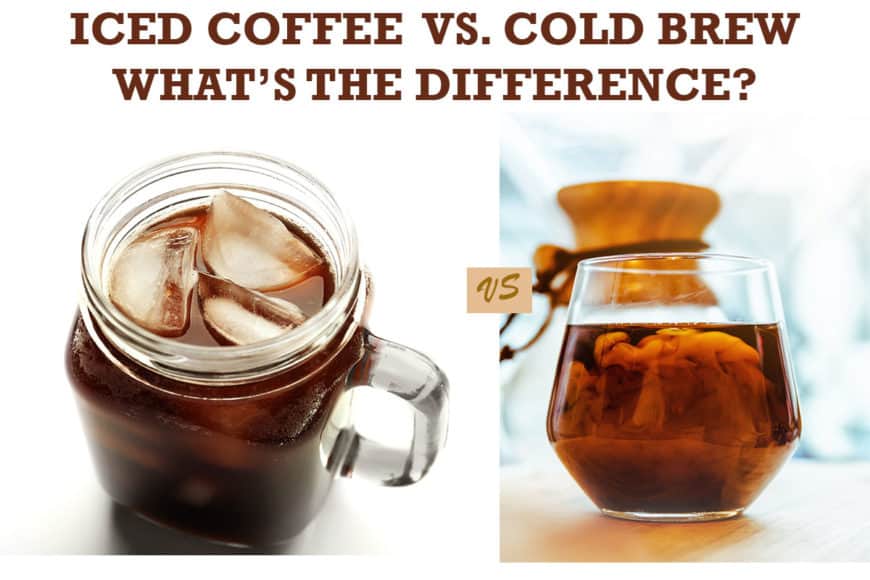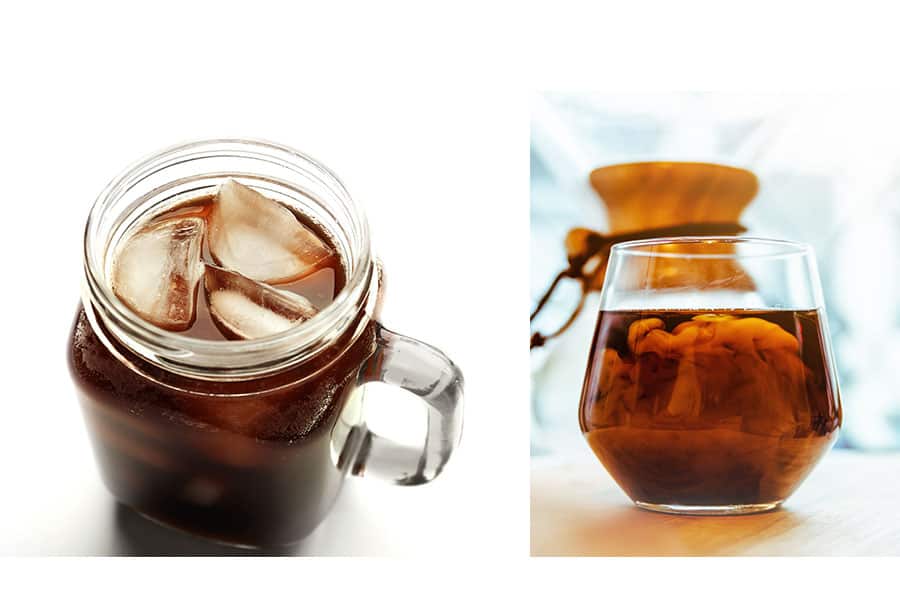
Cold Brew and Iced Coffee are two popular methods of enjoying coffee over ice. There are however, some key differences between them.
Cold Brew is made by steeping coffee grounds in cold water for several hours, resulting in a smooth, less acidic, and less bitter coffee concentrate. Iced Coffee, on the other hand, is made by brewing hot coffee and then pouring it over ice. This results in a less concentrated and more dilute coffee that is often flavored with syrups, sweeteners, and additional ingredients such as cream or milk.
Both Cold Brew and Iced Coffee are delicious in their own right, and the choice between them often comes down to personal preference and the desired flavor profile.
In this article, we’re going to take a deep dive into the world of Iced Coffee and Cold Brew coffee and see what the differences are.
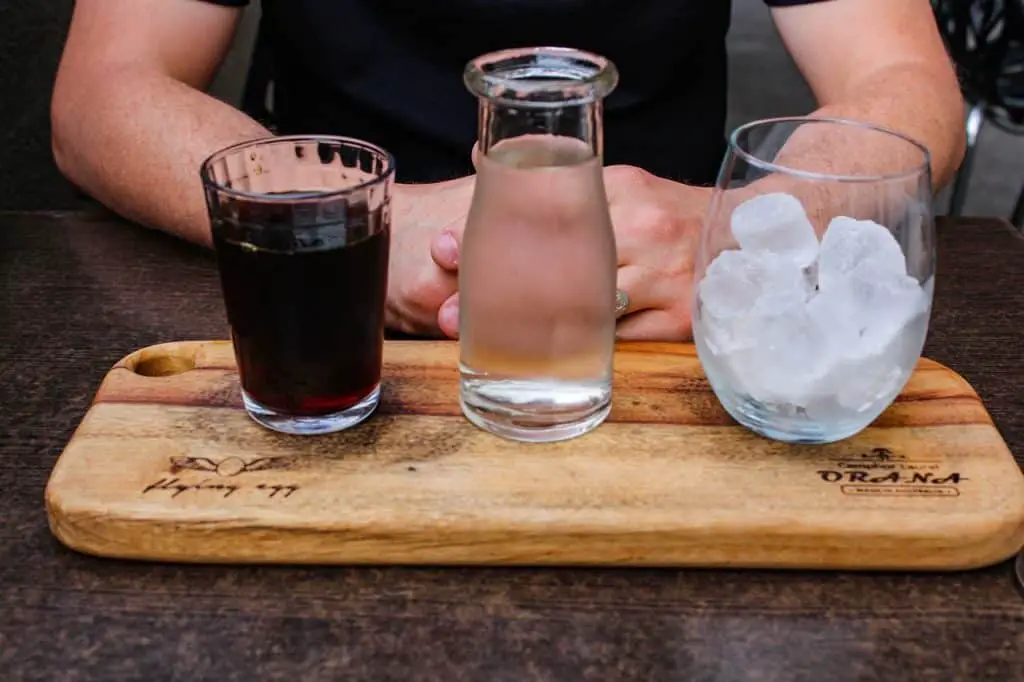
4 Ways Cold Brew is Different From Iced Coffee
The differences between cold brew and iced coffee are brew time, the temperature of the water during the brewing process, the amount of caffeine in each cup and their different tastes. Let’s go over each one in detail.
1. Time
Cold Brew coffee is brewed over a long period of time, usually between 12 to 24 hours depending on how strong you want it. This is a slow brewing process where the coffee is allowed to “marinate” for a long time. Personally, I have found that 16 hours works best but this will vary from person to person.
Iced Coffee, as mentioned earlier is regular drip coffee and is a quick brewing process that takes only minutes to make. This coffee is either poured over ice right after the brewing process or allowed to cool and then poured over is.
2. Temperature
A quick fact about coffee brewing: The hotter the water you use on coffee grounds, the quicker it brews.
Since cold brew coffee is made at room temperature it needs an extended time in order to get the proper extraction. Its also why the longer you let the coffee brew in the room temperature water, the stronger the cold brew coffee.
For Iced coffee, the coffee is brewed using hot water through a drip brewer or pour over which means it needs substantially less time to brew.
3. Caffeine Content
Cold Brew coffee typically has a higher caffeine content than Iced Coffee because of the longer steeping time. The slow extraction process allows more caffeine to be extracted from the coffee grounds, resulting in a more concentrated and stronger coffee. However, this can vary depending on the specific cold brewing method used and the type of coffee beans used.
Iced Coffee, on the other hand, has a lower caffeine content than Cold Brew because the hot brewing method results in a less concentrated and more diluted coffee. Additionally, the addition of ice and other ingredients such as cream or sugar can also lower the caffeine content.
4. Taste
Cold Brew has a smooth, less acidic, and less bitter taste than Iced Coffee. The slow steeping process results in a coffee concentrate that is less harsh on the palate and has a natural sweetness. This makes Cold Brew a popular choice for those who prefer a milder and smoother coffee taste.
Iced Coffee, on the other hand, has a more acidic and bitter taste than Cold Brew. The hot brewing process results in a coffee that is less smooth and more sharp in flavor. Iced Coffee is often flavored with syrups, sweeteners, and additional ingredients such as cream or milk, which can alter the taste and make it sweeter or creamier.
Bottom Line: Cold Brew has a smooth and mild flavor, while Iced Coffee has a more acidic and bitter taste.
Where did Iced Coffee Come From?
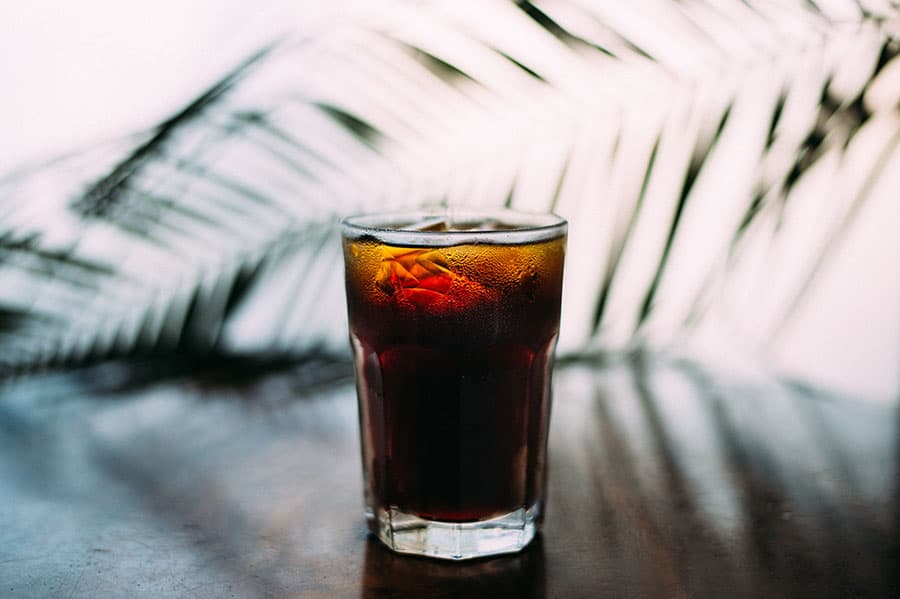
Iced coffee is rumored to have originated in Algeria in the mid-1800s. 19th century French colonial troops stationed in Algeria’s Mazagran fortress invented a delicious sweetened beverage made with coffee syrup and cold water, which was aptly named “mazagran.”
Over the decades, mazagran made its way to Portugal, Austria, and Catalonia, where it’s sometimes mixed with lemon, sugar syrup, or even rum. Most coffee connoisseurs believe mazagran to be the original iced coffee. Many other countries have their own national variations on iced coffee, including Australia, Chile, India, Italy, Japan, the Philippines, Thailand, and Vietnam.
As its name suggests, iced coffee is literally just coffee served chilled. It’s often combined with different creamers, milks, dairy substitutes, or flavored sweeteners to create concoctions that almost resemble desserts.
When iced coffee first started gaining popularity in the United States, it was prepared simply by pouring regular hot coffee into a glass of ice. However, the melting ice cubes diluted the coffee, creating a subpar beverage that tasted weak and watery.
To combat this dilution of flavor, restaurants and coffee shops soon learn to brew iced coffee using double batches. They would use double the amount of coffee grounds when brewing the hot coffee, so that even when diluted with ice, the resulting iced coffee still tasted just as strong as a cup of hot coffee.
How to Make Iced Coffee
Making Iced coffee is a very straight forward process. You can make coffee using a pour over method such as a Chemex or V60 or you can use coffee from a drip coffee maker such as a Oxo brewer.
Either way you decide you will need to grind the coffee for the brewing method you decide and brew the coffee for 4 minutes using a water to coffee ratio of 15 to 1.
Once you brew the coffee using your preferred method then all you need to do is put some ice in a glass and pour in the coffee. You can also add your favorite milk or milk substitute depending on your tastes.
Where did Cold Brew Coffee Originate?
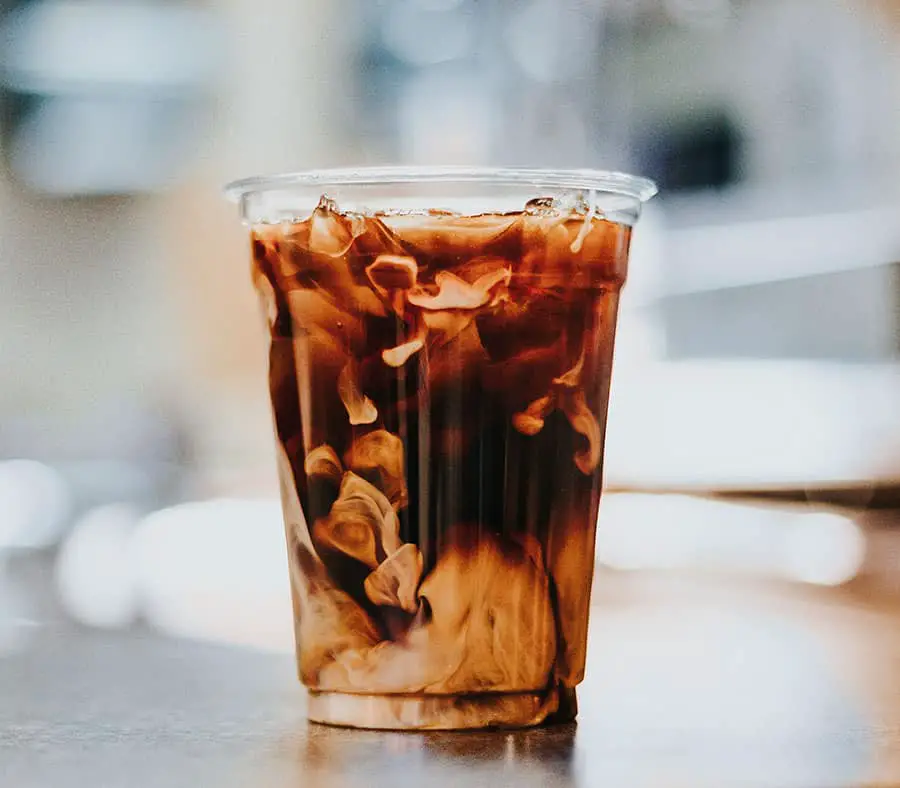
It was pioneered by Blue Bottle Coffee and Stumptown Coffee Roasters around 2010, and for the first few years of its existence, it remained a very niche, very quirky method of preparing coffee, only available at hipster cafes and coffee shops. However, in 2015, Starbucks began offering cold brew in some of its locations.
Within the next few years, cold brew expanded to every single Starbucks in the entire United States. Other coffee chains started to offer cold brew as well, including Dunkin’ Donuts, Peet’s Coffee, and The Coffee Bean & Tea Leaf.
Now it seems like cold brew has become a permanent and unescapable part of the coffee landscape, joining a formidable roster of predecessors, including the frappucino, the flat white, and the pumpkin spice latte.
When cold brew first exploded onto the popular market, many people were skeptical. What is the difference between cold brew and regular old iced coffee? Was cold brew just made up by coffee chains to scam unsuspecting iced coffee lovers?
It turns out, the process of making cold brew is quite different from the process of making regular iced coffee. When done correctly, the cold brewing process creates a glass of coffee that’s smooth, rich, and balanced, without the harsh tones of acidity and bitterness that can sometimes mar a glass of regular iced coffee.
How to Make Cold Brew Coffee
Unlike iced coffee, which is brewed using heat and then poured over ice, cold brew is never exposed to heat. To make a batch of cold brew, you need to steep coffee grounds in room temperature water for at least 12 hours and up to 24 hours ( everybody has an opinion on their favorite number of hours) and can do this by using something like the Toddy System which you can get on Amazon. or a variety of more “homemade” methods
If you feel like making just a basic brew, you can easily make cold brew at home by combining coffee grounds and water in a mason jar, leaving it out overnight, and then filtering the grounds out using a muslin cheesecloth.
The extended brewing process at room temperature extracts the natural sugars, oils, and caffeine from the coffee grounds, creating a finished product that’s smooth, highly caffeinated, and that enhances the flavors of the coffee used taste that regular iced coffee lacks.
For example, if you make cold brew with say coffee from Brazil, the coffee natural chocolate nutty taste will really come through. Just be sure you cut the cold brew with either water or some milk product as it is a concentrate.
Final Thoughts
Coffee hipsters tend to prefer cold brew over iced coffee mostly because of the flavors and extra kick you get out if it since it’s brewed at room temperature and then poured over ice. After having cold brew regular iced coffee will taste weak or even watery.
Also some glasses of iced coffee might taste stale, overly acidic, or overly bitter due to the brewer and coffee roast level used. In contrast, good cold brew can last up to a couple of weeks and still have its flavor profile.
The time-intensive brewing process that Cold Brew requires creates a strongly caffeinated, smooth, and silky finished product that tastes great with or without milk and sugar. Keep in mind that due to the brewing process, at most coffee shops, cold brew is also a bit more expensive than regular iced coffee.
To the uninitiated, iced coffee might seem basic and simple. However, a little bit of research reveals that the world of iced coffee is much wider than it might initially seem. There are dozens of different kinds of iced coffee drinks out there, each made using unique ingredients and preparation methods.
Cold Brew coffee is also absolutely delicious, and if you’ve been reluctant to try it in the past, you absolutely should give it a try! Who knows, you just might discover your new favorite beverage!

